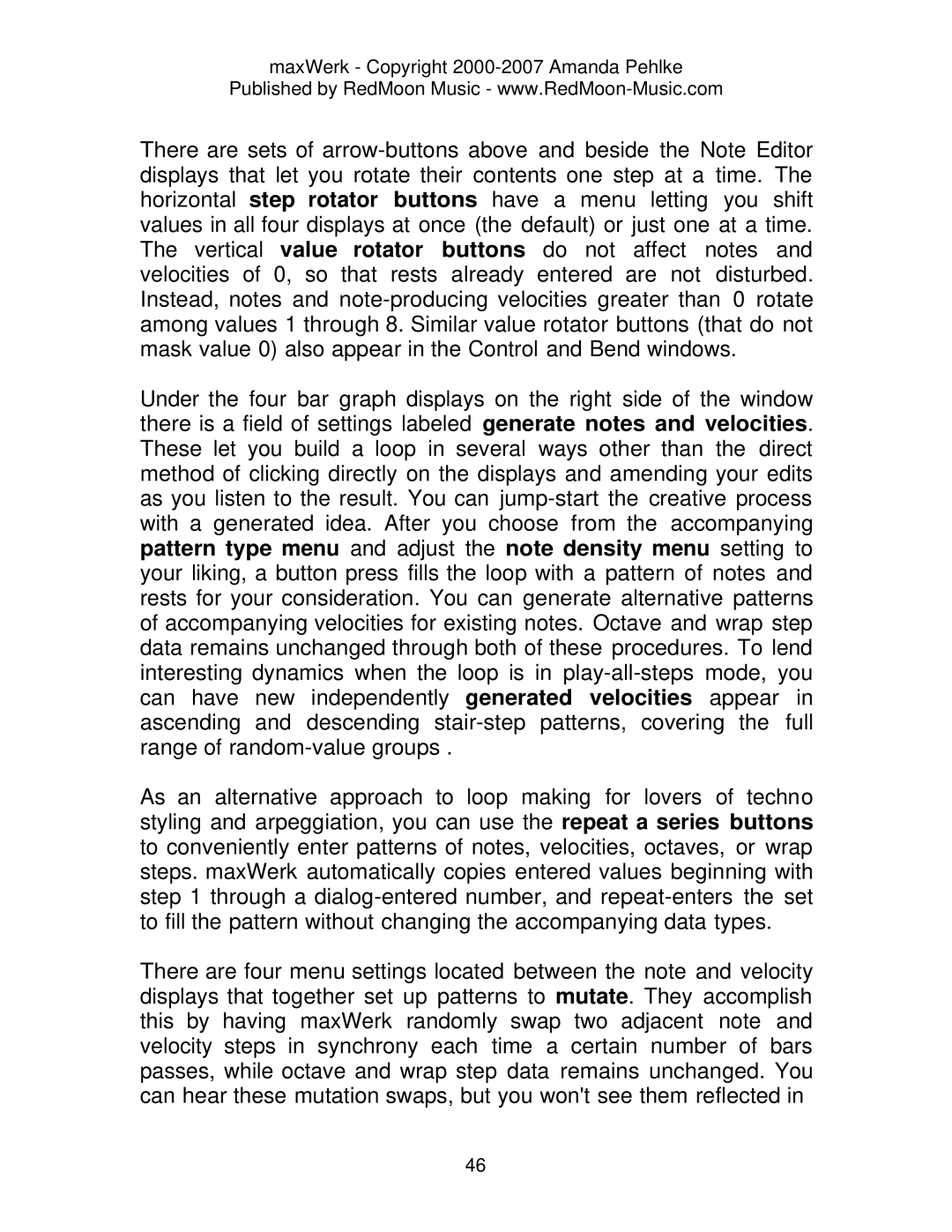maxWerk - Copyright 2000-2007 Amanda Pehlke
Published by RedMoon Music - www.RedMoon-Music.com
There are sets of arrow-buttons above and beside the Note Editor displays that let you rotate their contents one step at a time. The horizontal step rotator buttons have a menu letting you shift values in all four displays at once (the default) or just one at a time. The vertical value rotator buttons do not affect notes and velocities of 0, so that rests already entered are not disturbed. Instead, notes and note-producing velocities greater than 0 rotate among values 1 through 8. Similar value rotator buttons (that do not mask value 0) also appear in the Control and Bend windows.
Under the four bar graph displays on the right side of the window there is a field of settings labeled generate notes and velocities. These let you build a loop in several ways other than the direct method of clicking directly on the displays and amending your edits as you listen to the result. You can jump-start the creative process with a generated idea. After you choose from the accompanying pattern type menu and adjust the note density menu setting to your liking, a button press fills the loop with a pattern of notes and rests for your consideration. You can generate alternative patterns of accompanying velocities for existing notes. Octave and wrap step data remains unchanged through both of these procedures. To lend interesting dynamics when the loop is in play-all-steps mode, you can have new independently generated velocities appear in ascending and descending stair-step patterns, covering the full range of random-value groups .
As an alternative approach to loop making for lovers of techno styling and arpeggiation, you can use the repeat a series buttons to conveniently enter patterns of notes, velocities, octaves, or wrap steps. maxWerk automatically copies entered values beginning with step 1 through a dialog-entered number, and repeat-enters the set to fill the pattern without changing the accompanying data types.
There are four menu settings located between the note and velocity displays that together set up patterns to mutate. They accomplish this by having maxWerk randomly swap two adjacent note and velocity steps in synchrony each time a certain number of bars passes, while octave and wrap step data remains unchanged. You can hear these mutation swaps, but you won't see them reflected in
